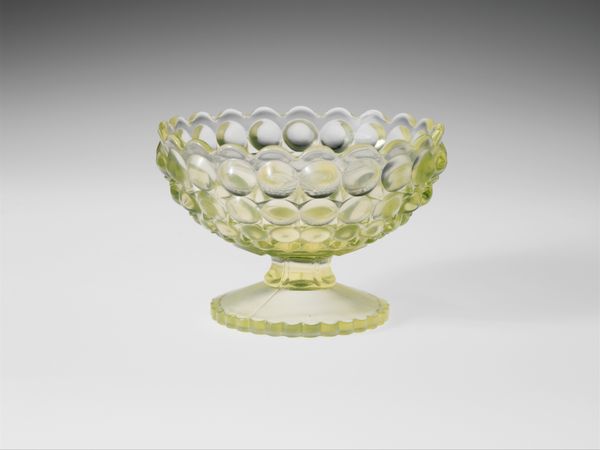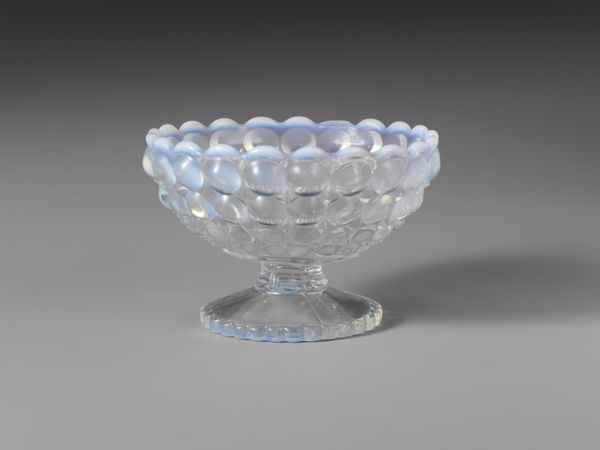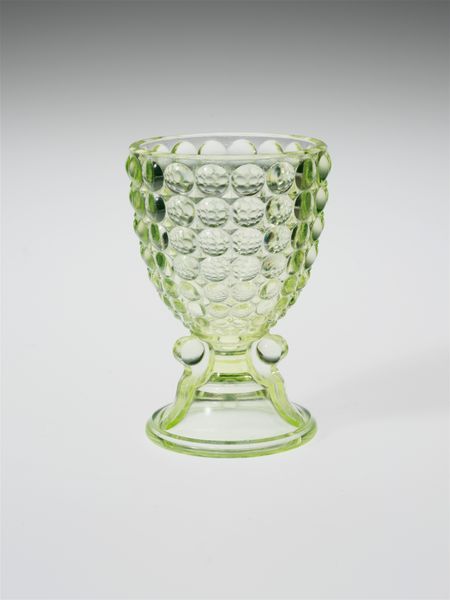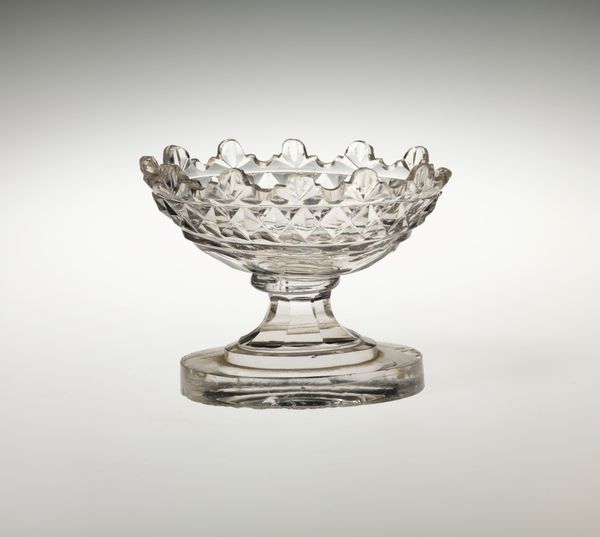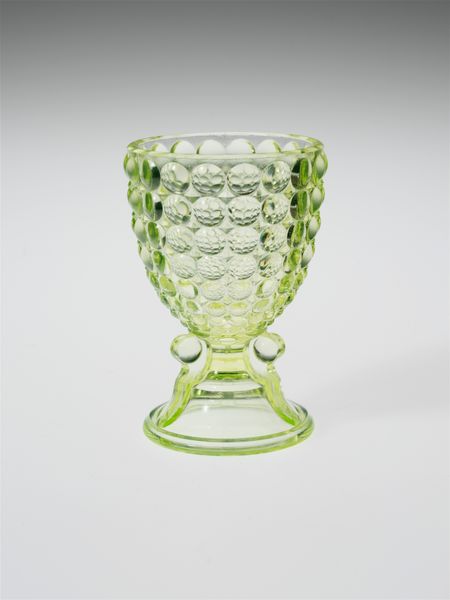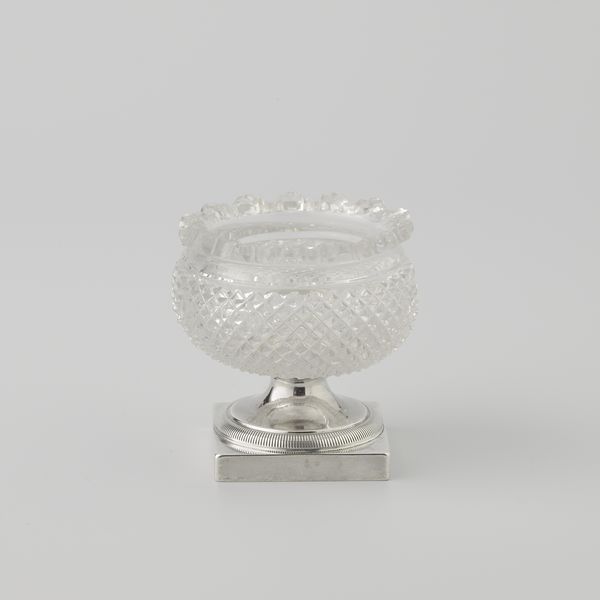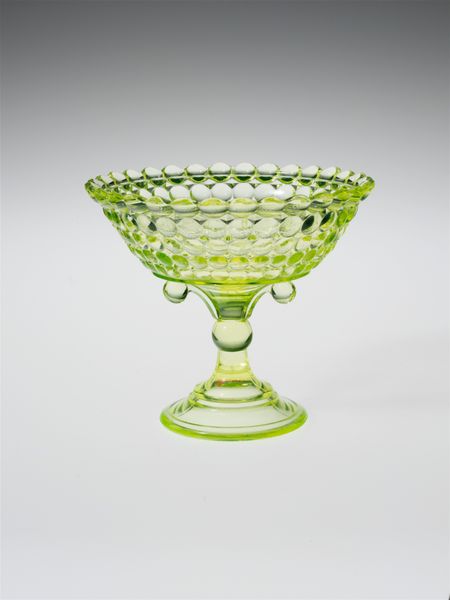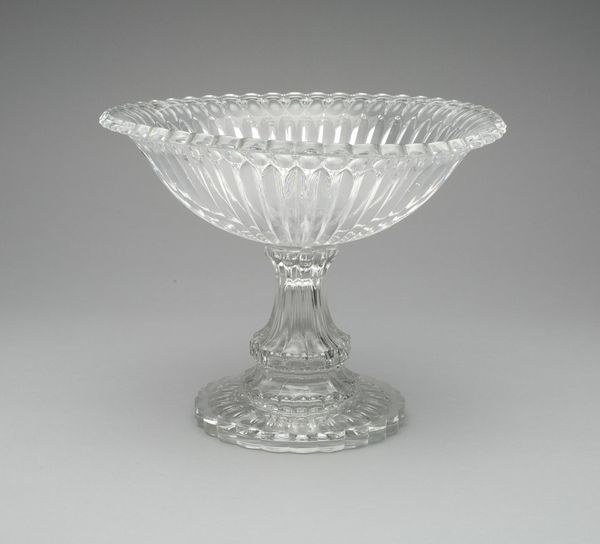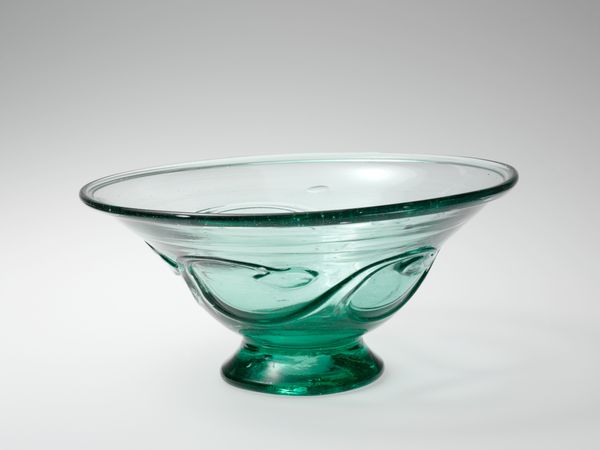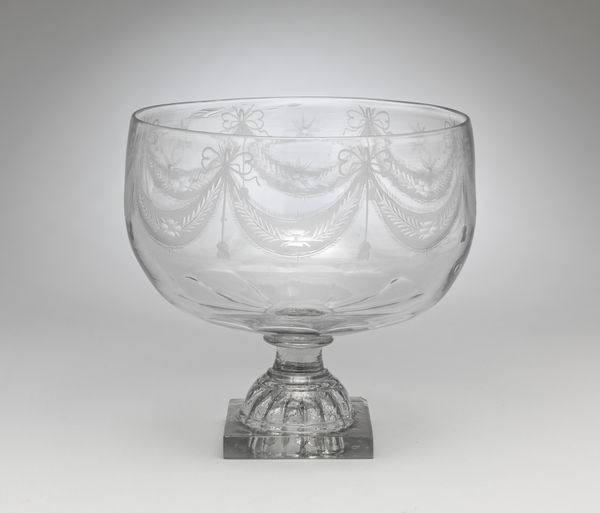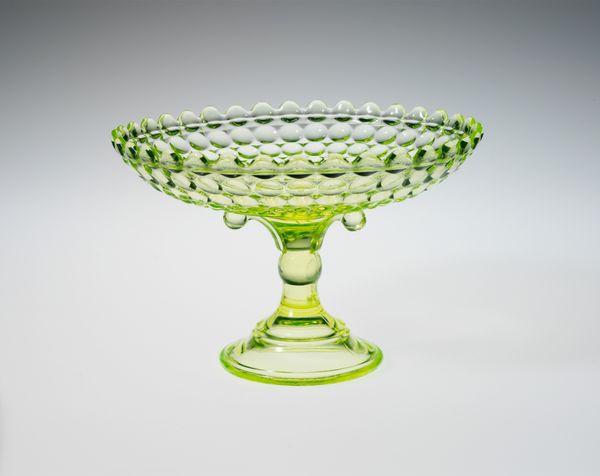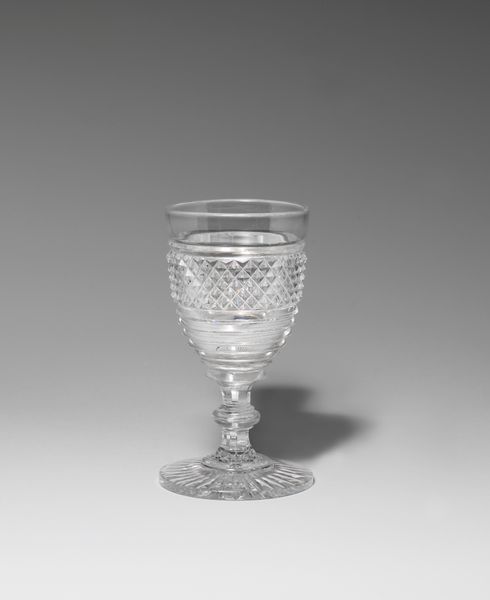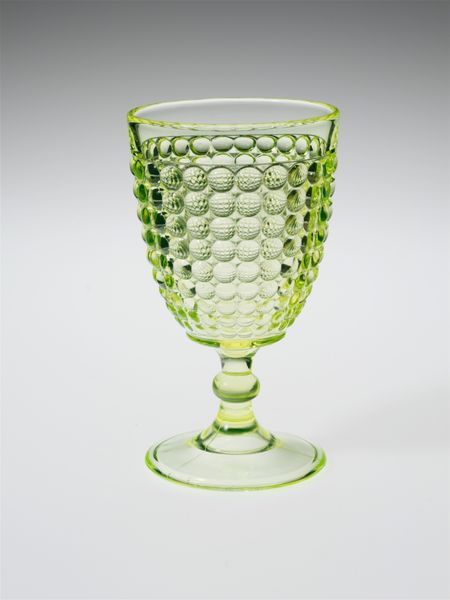
ceramic, glass
#
ceramic
#
glass
#
united-states
Dimensions: H. 2 5/8 in. (6.7 cm); Diam. 4 in. (10.2 cm)
Copyright: Public Domain
Curator: Before us is a delicate glass piece titled "Sauce Dish," created between 1885 and 1888 by the Richards and Hartley Flint Glass Co. This charming object resides here at the Metropolitan Museum of Art. Editor: It’s giving antique lemon drop. I'm drawn to the texture—almost like raised bubbles clinging to the surface. It looks so fragile. What stories could this hold from the late 19th century? Curator: These glass factories like Richards and Hartley were booming during that era. Glassware became a symbol of domestic aspiration, a way for middle-class families to participate in a culture of refinement, albeit often through mass-produced goods. Editor: So it’s less about haute couture and more about accessible beauty? I find myself wondering who was able to acquire these objects? What kind of domestic labor supported it? This isn't just about dainty lunches, is it? Curator: Absolutely. While this piece embodies Victorian-era aesthetics, we can't ignore the labor that fueled its production. Child labor was prevalent in glass factories at the time, and these factories had some of the worst work conditions for both children and adult laborers alike. We must see the broader context to appreciate the layers of meaning embedded in a "simple" sauce dish. The glass work symbolizes progress for some while simultaneously representing oppression of the working class. Editor: The materiality contributes too, the color hints to industrial tints. So even beauty can be borne of oppression. Looking at it through that lens transforms it from simply decorative to deeply political, connecting to debates on equity in the workplace and wealth distribution. I would encourage institutions to consider exhibiting more artwork reflecting those topics of conversation. Curator: Precisely. Objects like this offer an opportunity to question the narratives that surround the past, as well as to discuss present concerns and shape collective futures. Editor: Definitely, and reminding us that aesthetics can be powerful forms of social and economic discourse. Curator: Thank you for your comments. Together, we hopefully can make artwork like "Sauce Dish" come alive.
Comments
No comments
Be the first to comment and join the conversation on the ultimate creative platform.
